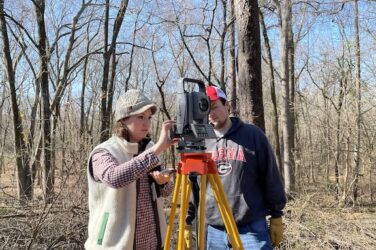Tomorrow – Wednesday, January 31 – at approximately 6:48 am, Athens residents will be able to view a rare lunar eclipse. Although partial lunar eclipses happen quite frequently, onlookers can look forward to the emergence of a Super Blue Blood Moon during the eclipse, a sight that hasn’t been visible in North America for over 150 years.
What is it?
According to NASA, this year’s Super Blue Blood Moon is considered an “astronomical trifecta” for three reasons:
- It is the third in a series of “supermoons,” which are 14 percent brighter than normal due to the fact that the Moon is much closer to Earth in its orbit.
- It will pass through Earth’s shadow before sunrise to give North American viewers either a full or partial view of a total lunar eclipse.
- The eclipse falls on the second full moon of the month, otherwise known as the “blue moon” – hence, the name “super blue blood moon.”
The moon will take on a reddish tint, which is more widely known as a “blood moon” – hence, the name “super blue blood moon.”
This is the first time in two and a half years that a Total Lunar Eclipse will be visible on Earth at all, and the first time since Andrew Johnson’s presidency in 1866 that North American residents will be able to view a Super Blue Blood Moon.
Where is it visible?
In North America, Hawaii and Alaska, the Super Blue Blood Moon will be visible before sunrise on January 31, whereas those in the Eastern hemisphere will have to wait until the evening moonrise to view it. The moon will set in the western sky, and viewers along the east coast can expect partial to maximum lunar visibility from 6:48 to 7:51 am EST.
Where can I view it?
Weather-permitting, Athens residents can expect to see a partial lunar eclipse at around 6:48 am on Wednesday. Similar to 2017’s Total Eclipse, clear skies are expected through sunrise, and prospective viewers should head for the high ground.
Despite the fact that Dr. Loris Magnani of UGA’s Physics and Astronomy department says that Athens onlookers shouldn’t get their hopes too high for an impressive viewing, he thinks early risers would do best to look for areas with less tree cover – like a hill or building roof.
“Depending on where you are, the moon might be behind trees – chances are, the moon might be behind trees or buildings – so, your best bet is to go on top of a tall building, which we don’t really have too many of, or a place where you can see as close to the horizon as possible,” Dr. Magnani says.
As far as where students and locals can go for the clearest viewing, Dr. Magnani suggests trying one of the many parking deck rooves.
“You know, the parking garage at the intramural field is in a relatively open area, and you can go two or three stories high…and that might be a reasonable place to see it.”
The next visible Total Lunar Eclipse is expected to occur on January 20, 2019.
By: Natalie Wickstrom







